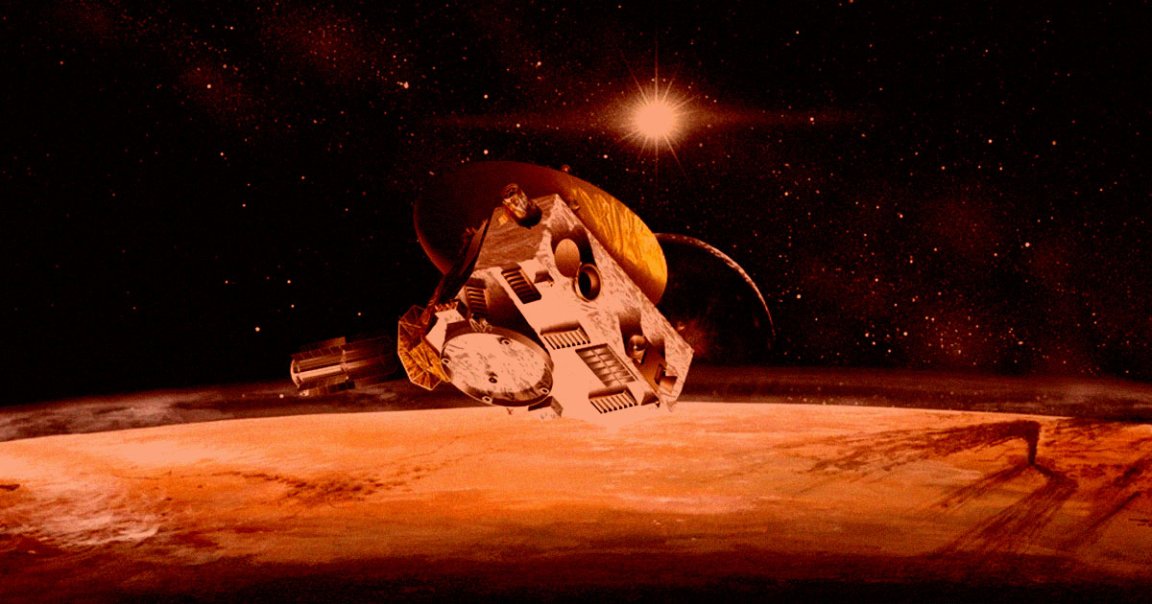
For almost 15 years, NASA’s New Horizons spacecraft has been blasting through the cosmos on a journey to study the farthest reaches of our solar system.
But now that it’s gotten there, NASA has made a surprise announcement: that the mission’s primary target is changing from the mysterious objects lurking in our system’s Kuiper asteroid belt to studying the environment at the distant reaches of the Sun instead — a necksnapping change that has upset the scientists in charge of the mission, Gizmodo reports.
“NASA spent almost a billion dollars to get this spacecraft to the Kuiper Belt,” Alan Stern, principal investigator for New Horizons, told Gizmodo. “You spend a billion dollars to get a spacecraft all the way across the solar system and then divert it from its primary objective.”
It all raises an interesting question: why change the primary objective? And why now?
The brewing controversy — which, according to Stern, could result in a takeover by a different team next year — highlights the difficulty of finding scientific consensus over a billion-dollar mission that has been going on for almost 15 years.
New Horizons’ original objective was to study the worlds lurking at the edge of our solar system that remain largely mysterious to us.
“No spacecraft has ever explored the Kuiper Belt before and no spacecraft has plans yet to come again,” Stern told Giz, warning that this could “be the end of any Kuiper Belt exploration by spacecraft for decades because it takes so long to get out there.”
Stern’s fellow team members are clearly on his side.
“Scientifically, I just don’t feel that we’re at diminishing returns yet,” Kelsi Singer, the mission’s project scientist at the Southwest Research Institute in Boulder, Colorado, told Nature earlier this month.
New Horizons has already made some impressive contributions to our understanding of the solar system. The spacecraft has had a close look at Pluto’s icy surface, revealing some of its secrets. It also performed a flyby of a 21-mile Kuiper Belt Object (KPO) called Arrokoth back in 2019.
But now, New Horizons has run out of KPO targets for a future flyby, and senior NASA scientists are having a harder time justifying future planetary science missions.
A NASA panel concluded in a review report last month that New Horizons wasn’t likely to glean any useful data from further studying the KPOs “because the spacecraft lacks resources for long term, high cadence observations for light curves, which are necessary for their proposed planetary science goals/objectives.”
In short, the agency is now looking to turn the mission into primarily a heliophysics mission.
“Because that’s where the strength lies — in the science that can be conducted from here forward,” Lori Glaze, head of NASA’s planetary science division, told Nature.
But to Stern, it’s a needless redirection of a mission almost 15 years in the making.
“We do heliophysics observations every single day… and there’s no reason to make it a battle between these two things, they coexist,” he told Giz, explaining that the spacecraft can easily do both without affecting costs.
And Stern and his team, alongside other members of the science community, have been lobbying to try and have NASA change its mind on the mission redirect.
“Our team believes that it’s very short-sighted and premature to quit exploring the Kuiper Belt,” he told Gizmodo, adding that “we think it’s unwise and a bad use of NASA money to move the mission away from Kuiper Belt exploration.”
More on New Horizons: Scientists Stumped by “Ghostly Glow” Surrounding Our Solar System